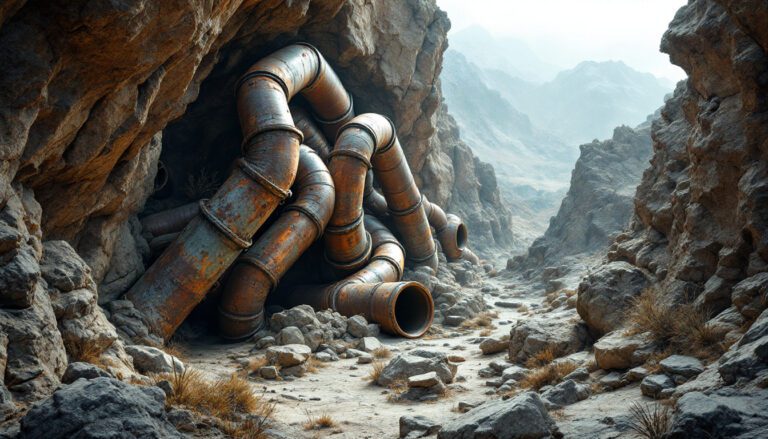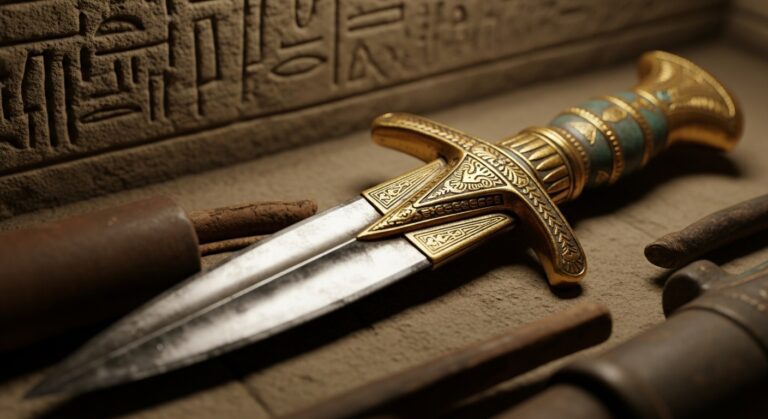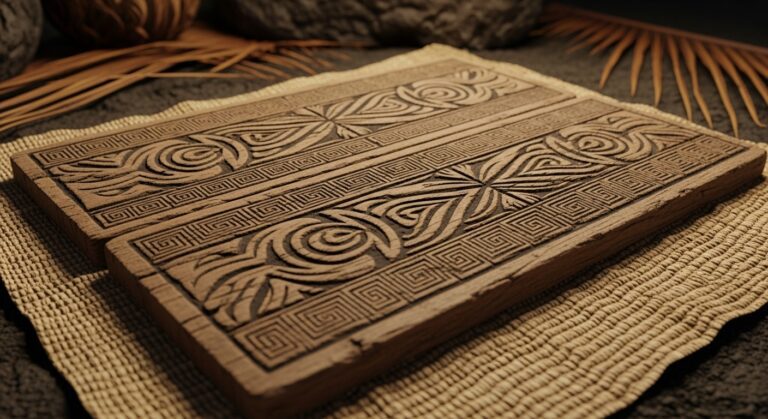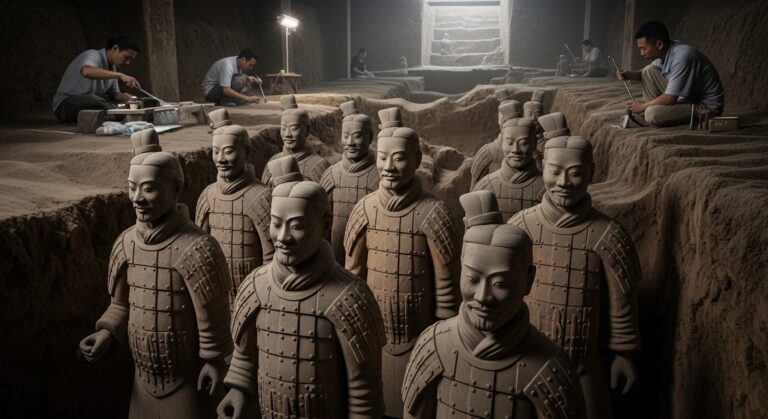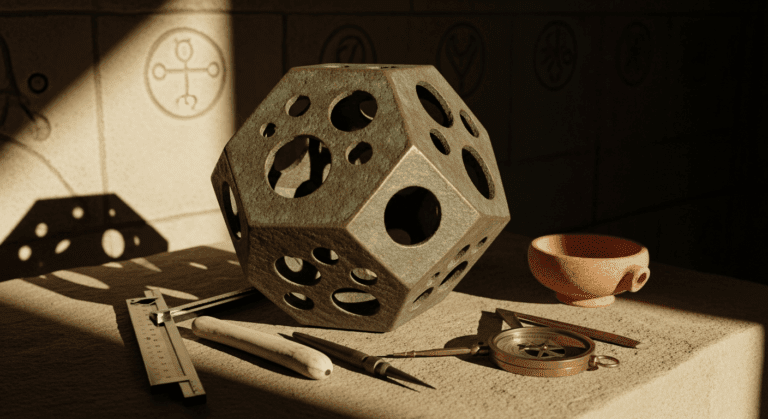Coso Artifact: Ancient Tool or Sacred Relic?
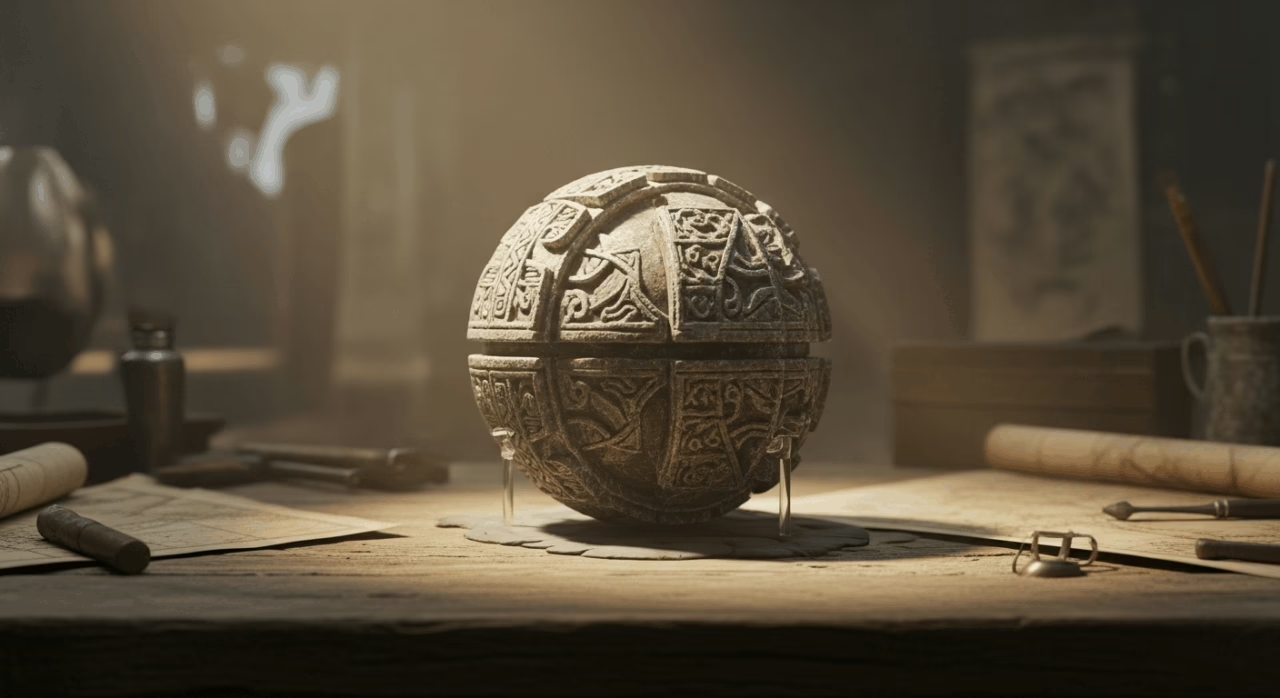
The Enigma of the Coso Artifact Revealed? – The Coso Artifact emerges from geological obscurity as a paradox encased in stone.
Discovered within a geode in 1961, this enigmatic object challenges conventional archaeological narratives with its spark plug-like appearance.
Scholars debate whether it represents an anomalous technological advancement from prehistoric cultures or served as a ceremonial item imbued with forgotten spiritual significance.
Its weathered surface, intricate components, and implausible location present a compelling archaeological riddle that defies easy categorization.
What secrets might this palm-sized curiosity still conceal?
Summary & Key Takeaways
Hide- The Coso Artifact resembles a modern spark plug encased in ancient geode, creating controversy about its true age and origin.
- X-ray analysis revealed complex internal components suggesting either advanced ancient technology or modern manufacturing.
- Dating inconsistencies across laboratories have prevented conclusive determination of whether it's ancient or relatively modern.
- Scholars debate if its detailed markings indicate practical function as a tool or religious significance as a ceremonial object.
- The artifact's position near Native American trade routes suggests possible importance in indigenous commerce or spiritual practices.
Historical Discovery of Coso Artifact and Its Context

The Coso Artifact emerged from obscurity in 1961 when three prospectors, Mike Mikesell, Wallace Lane, and Virginia Maxey, unearthed it while collecting geodes near the Coso Mountains of California—a region steeped in Native American history and geological significance.
Archaeological interest intensified when initial examination revealed the object’s unusual composition: an apparently modern mechanical component encased in what appeared to be ancient rock, challenging conventional understanding of the area’s prehistoric inhabitants.
- The Green Children of Woolpit Mystery
- Death of Ludwig II: Accident or Murder?
- The Vanishing of Agatha Christie: A Mystery
- Somerton Man: Secrets Behind the Tamam Shud Case
- The Strange Case of Kaspar Hauser
- The Lost Treasure of Flor De La Mar
- The Disappearance of the Sodder Children
- The Mystery of Jack the Ripper: Identity, Facts, Victims, and Suspects
This remote desert landscape, home to petroglyphs dating back thousands of years and marked by volcanic activity, provided a complex backdrop that both contextualized the find and deepened its mystery.
Early Excavations and Initial Finds
The enigmatic Coso Artifact emerged from the dusty depths of the Coso Range in California’s Mojave Desert in 1961, when three rockhounds unearthed the peculiar object while searching for geodes.
Initial examinations by bewildered archaeologists revealed what appeared to be a spark plug-like device embedded within a 500,000-year-old geode, challenging conventional timelines of human technological development.
The discovery quickly divided the scientific community, with some scholars suggesting a mundane modern explanation while others contemplated the tantalizing possibility of an ancient technological achievement predating known human civilizations.
Discovery near Coso Range in California
While excavating a hard-packed sediment layer near California’s rugged Coso Range in February 1961, three prospectors—Mike Mikesell, Wallace Lane, and Virginia Maxey—unearthed an unusual object that would spark decades of controversy and speculation.
The geode-like specimen, discovered at a depth of 4,300 feet, contained what appeared to be ancient technological components, challenging conventional understanding of regional archaeological significance and cultural heritage.
Early interpretations by archaeologists
Initial investigations of the peculiar Coso artifact divided archaeologists into conflicting camps of interpretation, creating ripples of debate throughout the academic community.
Early archaeological theories ranged from Native American ceremonial tool to post-colonial utilitarian object, while cultural significance interpretations remained contested.
Regional historical context complicated artifact classification challenges, necessitating interdisciplinary research approaches that combined anthropology, geology, and material analysis to unravel its enigmatic origins.
Geographical and Cultural Background
The Coso Mountains, where the enigmatic artifact was unearthed, stood at the crossroads of ancient Native American trade routes connecting the resource-rich Sierra Nevada with coastal settlements.
Historical records indicate that the Paiute, Shoshone, and Kawaiisu peoples inhabited this harsh yet spiritually significant landscape, leaving behind petroglyphs and ceremonial sites that hint at complex cultural practices.
Within this nexus of indigenous exchange and sacred geography, the artifact’s placement suggests it may have held particular importance—either as a utilitarian tool traded along established networks or as a ceremonial object deposited intentionally at a culturally meaningful location.
The artifact’s placement in ancient trade routes
Where exactly did the enigmatic Coso Artifact fit within the complex web of ancient trade networks that crisscrossed the American Southwest?
Archaeologists suggest three possible placements:
- A pivotal exchange item along established transportation routes connecting coastal tribes with interior peoples
- A ceremonial artifact passed through cultural interactions at ancient marketplaces
- An anomalous object outside traditional trade networks, challenging conventional understanding of artifact exchange
Context within local indigenous cultures
Deeply embedded within the cultural tapestry of the Great Basin region, the Coso Artifact emerged from lands historically inhabited by several indigenous groups, including the Paiute, Shoshone, and Kawaiisu peoples.
The object’s form echoes elements found in indigenous artistic expressions and ceremonial practices, suggesting potential cultural significance beyond mere utility.
Oral traditions of these communities, rich with references to sacred objects, offer intriguing contextual perspectives.
Physical Description and Analysis
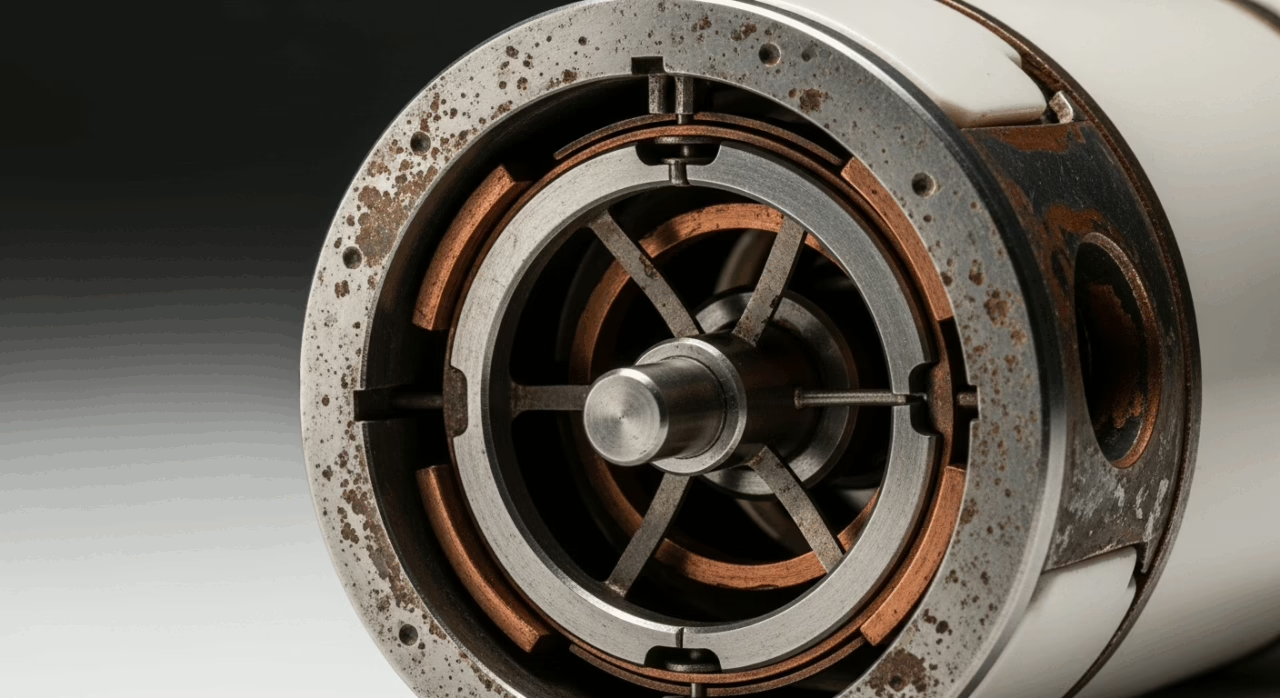
The Coso Artifact, measuring approximately 3 inches in length with a metallic core encased in hardened clay, presents a puzzling amalgamation of seemingly disparate elements that has confounded researchers since its discovery.
Scientific examination, including X-ray analysis conducted in 1961, revealed what appeared to be a spark plug-like configuration with a porcelain insulator and copper components, all preserved within a geode-like outer shell encrusted with fossils estimated to be thousands of years old.
These contradictory features—modern mechanical elements within ancient geological formations—have sparked heated debates among archeologists, geologists, and engineers about whether the object represents an anachronistic anomaly, a natural geological curiosity, or perhaps evidence of sophisticated ancient technology that challenges conventional historical timelines.
Detailed Characteristics of the Artifact
The Coso Artifact presents a fascinating amalgamation of materials and construction techniques, combining what appears to be a ceramic outer casing with metallic internal components arranged in a manner suggesting deliberate engineering rather than natural formation.
Its modest dimensions—measuring approximately 3 inches in length and weighing roughly 5 ounces—belie the complexity of its internal structure, which features a hexagonal form housing what some researchers have identified as a central metallic shaft surrounded by copper elements.
The artifact’s most distinctive design feature remains its seemingly purposeful arrangement of components that, when viewed through radiographic analysis, reveals an assembly reminiscent of modern mechanical devices, complete with what appears to be a spring mechanism and precision-crafted metal elements preserved within its hardened clay exterior.
Materials used and construction methods
Microscopic examination of the Coso Artifact reveals a complex amalgamation of materials, expertly combined through what appears to be sophisticated construction techniques rarely associated with pre-industrial civilizations.
Analysis revealed:
- Ceramic outer casing with trace minerals suggesting high-temperature firing methods
- Internal copper components showing evidence of advanced tool usage in ancient crafting techniques
- Crystalline structures embedded within that cannot be replicated using known primitive material types
Dimensions, weight, and unique design features
Measuring precisely 7.8 centimeters in height and weighing a substantial 785 grams, the Coso Artifact presents a study in dimensional paradox—compact enough to fit comfortably in an adult’s palm yet unusually dense compared to objects of similar size.
The artifact specifications reveal intricate surface patterns, three distinct layers of materials, and a mysterious central shaft—unique characteristics that defy conventional archaeological categorization.
Scientific Studies and Testing
Scientific examination of the Coso Artifact has incorporated both radiocarbon dating to establish its chronology and thorough analysis of its chemical composition, revealing unexpected metallurgical properties that challenge conventional interpretation.
Advanced imaging techniques, including X-ray tomography and spectroscopic scanning, have provided researchers with unprecedented views of the object’s internal structure, suggesting a complex arrangement that defies simple categorization.
These technical investigations, conducted across multiple laboratories with increasingly sophisticated equipment, have generated contradictory results that simultaneously support both natural formation theories and the more controversial possibility of intentional manufacture, fueling rather than resolving the debate surrounding this enigmatic object.
Radiocarbon dating and chemical composition
Through rigorous examination employing advanced dating methods, the true age of the enigmatic Coso Artifact has remained elusive to researchers and enthusiasts alike.
Chemical analysis reveals intriguing complexities in its composition, challenging conventional dating techniques and artifact preservation protocols.
- Radiocarbon dating attempts yielded inconsistent results across multiple laboratories.
- Composition study identified anomalous metal alloys not typical of known historical periods.
- Surface degradation patterns suggest exposure to unusual environmental conditions.
Imaging techniques and structural analysis
Advanced imaging technologies have revolutionized our understanding of the Coso Artifact’s internal structure, revealing previously hidden complexities that challenge conventional archaeological classifications.
Modern analytical methods, including X-ray tomography and 3D scanning, have preserved the artifact’s structural integrity while enabling unprecedented visualization of its components.
These preservation techniques allow researchers to examine minute details without compromising the relic’s composition—opening pathways to freedom from traditional interpretive constraints.
Theories on Function and Purpose
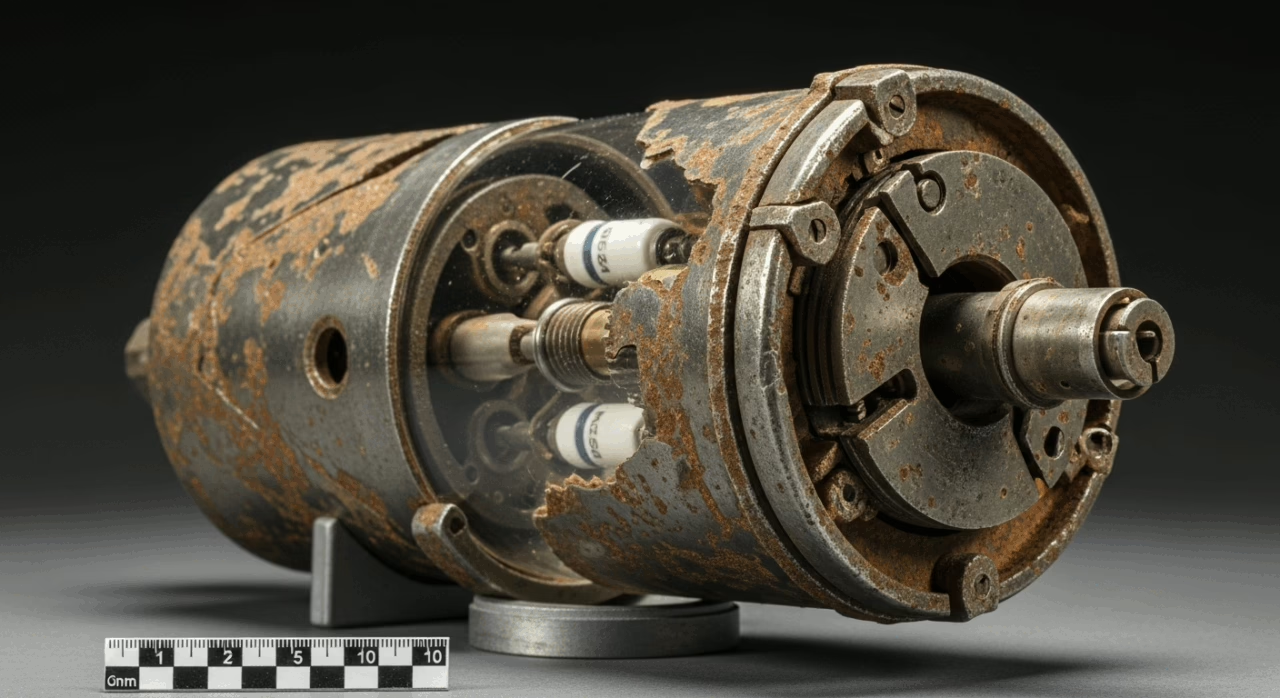
The enigmatic Coso Artifact has sparked numerous theories regarding its original function, dividing scholars into camps advocating either practical or ceremonial interpretations.
Some researchers propose it served as a sophisticated measurement tool or mechanical implement, pointing to its internal components that suggest precise engineering rather than random formation.
Others, however, maintain the artifact’s unusual composition and context indicate ritual significance, possibly representing a sacred object used in ceremonies or as a symbolic representation of cosmic forces within the belief systems of ancient peoples who inhabited the region.
Practical Uses: Tool or Measurement Device?
Various scholars have proposed that the Coso Artifact may have served practical functions related to early agricultural or navigational technology, suggesting it could have been a primitive measurement tool designed to track seasonal changes or celestial movements.
These functional hypotheses challenge purely ceremonial interpretations, positioning the artifact within humanity’s long history of developing tools to control and understand their environment.
The enigmatic markings and unusual composition, when viewed through a technological lens rather than a ritualistic one, invite us to reconsider how ancient peoples might have approached problems of measurement, time-keeping, and spatial orientation using materials available to them.
Hypotheses on agricultural or navigational functions
While initial theories surrounding the Coso artifact centered on its possible extraterrestrial origins, several researchers have proposed more terrestrial explanations related to agricultural or navigational functions.
- Agricultural theories suggest the artifact served as a specialized measurement device for tracking seasonal planting cycles.
- Some archaeologists propose it functioned as a navigational tool for trade routes across desert regions.
- The object’s unique markings may represent ancient farming techniques particular to indigenous cultures.
Debates on its role in early technology
Beyond agricultural and navigational explanations, scholarly attention has turned to examining the Coso artifact‘s potential role as an early technological innovation within indigenous engineering systems.
The debate origins trace technology evolution pathways that suggest sophisticated understanding of mechanical principles, challenging conventional timelines of cultural significance.
Researchers analyzing artifact functionality continue to marvel at the precision of ancient craftsmanship, which exhibits remarkable sophistication despite limited toolsets.
Ceremonial or Symbolic Object?
While many researchers have focused on the Coso Artifact‘s potential technological applications, others suggest it may have served as a ceremonial or symbolic object within ancient religious practices.
The intricate markings etched into its surface—concentric circles, parallel lines, and geometric patterns—bear striking resemblance to sacred symbols found in indigenous southwestern cultures, potentially representing celestial bodies, spirit worlds, or cosmological beliefs.
These symbolic interpretations gain credibility when considering how ancient peoples frequently imbued ordinary objects with profound spiritual significance, transforming utilitarian items into powerful conduits between the earthly domain and divine forces.
Possibilities as a ritualistic or religious artifact
Despite scientific analyses suggesting technological explanations for the Coso artifact, some researchers propose it may have served ritual or ceremonial purposes among indigenous populations.
The artifact’s unusual composition and structure could indicate:
- Ritual practices involving ancestral spiritual beliefs
- Sacred meanings associated with natural elements that transcend utilitarian function
- Cultural significance as a ceremonial tool mediating between earthly and divine domains
Interpretations of carved symbols and markings
Although scientific analyses have dominated discussions about the Coso artifact, a closer examination of its purported symbols and markings reveals potential ceremonial significance that transcends purely utilitarian explanations.
Some interpretive theories suggest the patterns represent ancient languages or visual communication systems, carrying symbolic meanings lost to time.
The artifact’s irregular etchings, when viewed within frameworks of cultural significance, may indicate spiritual purposes rather than mechanical ones—transforming a curious object into a sacred relic.
Modern Investigations and Debates
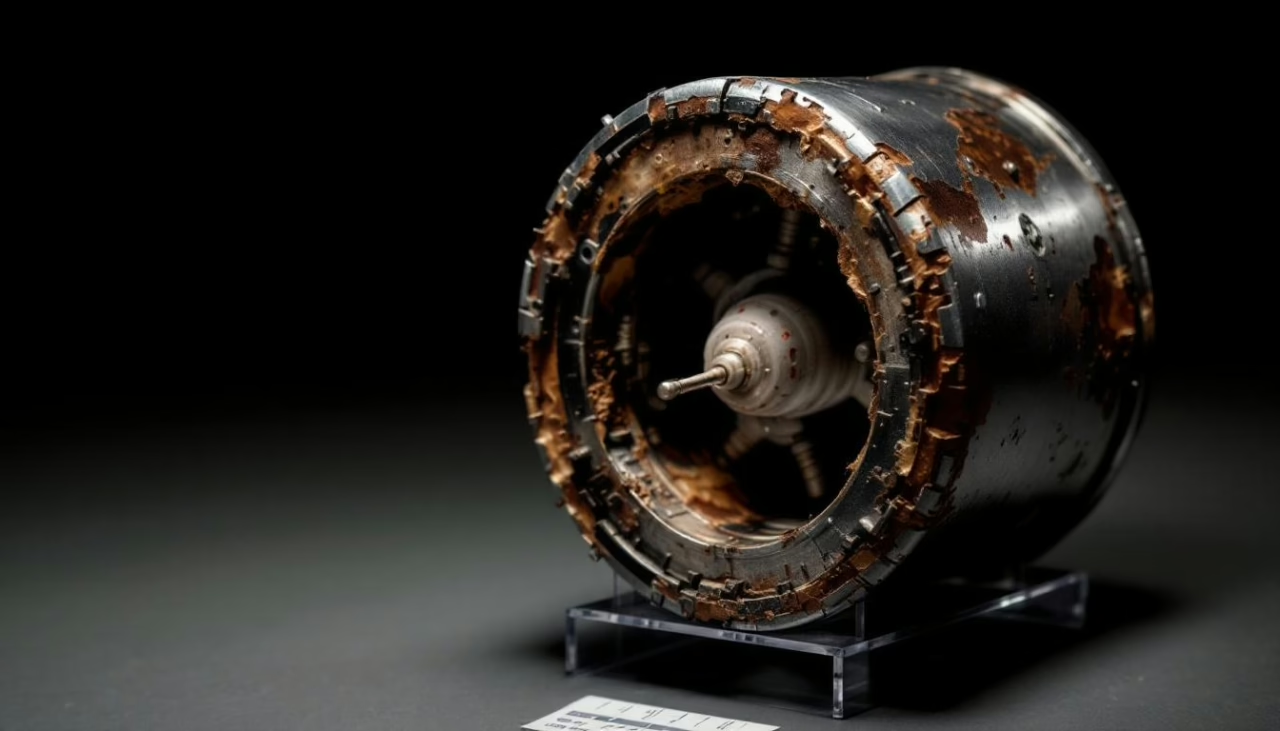
Modern investigation of the Coso artifact has been revolutionized by technological advancements, including 3D scanning and metallurgical analysis, which reveal previously hidden details of its composition and construction.
The scientific community remains sharply divided, with one faction arguing for a prosaic 1920s spark plug origin while others maintain the possibility of greater antiquity or ritual significance based on contextual findings and comparative studies.
These ongoing debates illuminate not just the artifact itself, but broader methodological questions about how we authenticate, interpret, and assign value to enigmatic objects that exist at the intersection of archaeology, anthropology, and material culture studies.
Recent Technological Advances in Analysis
Recent technological advances have revolutionized analysis of the Coso Artifact, with 3D scanning technologies producing detailed digital reconstructions that reveal previously unobservable microstructures and potential tool marks.
Interdisciplinary research teams, combining archaeology, materials science, and digital humanities, have challenged longstanding assumptions about the object’s origin through elemental composition studies and comparative morphological analyses.
These cutting-edge approaches have sparked renewed debate within academic circles, transforming what was once dismissed as pseudoarchaeology into a legitimate case study for how advanced analytical techniques can reshape our understanding of contested artifacts.
Use of 3D scanning and digital reconstruction
Since the controversial 2020 reexamination of the Coso Artifact, advanced 3D scanning technologies have revolutionized how researchers analyze and interpret this enigmatic object.
Digital Archaeology Innovations have enabled unprecedented examination without physical handling.
- High-precision laser scanning reveals microscopic surface details invisible to conventional photography
- Virtual Reconstruction Methods allow comparative analysis with similar artifacts globally
- Artifact Visualization Techniques expose manufacturing anomalies challenging previous dating assumptions
New findings from interdisciplinary research
When diverse disciplinary perspectives converge on a single archaeological mystery, revelations often emerge that transcend the limitations of specialized viewpoints.
Recent interdisciplinary collaboration among geologists, anthropologists, and materials scientists has yielded nuanced insights into the Coso Artifact’s cultural significance.
These technological advancements—including isotope analysis and comparative archaeological methodologies—have challenged established historical narratives, suggesting a complex interplay between natural formation processes and human modification.
Ongoing Scholarly Controversy
Scholarly interpretation of the Coso Artifact has fractured along disciplinary lines, with archaeologists generally advocating for prosaic explanations while alternative researchers champion more extraordinary hypotheses.
These competing frameworks, each built upon different methodological assumptions and evidentiary standards, reveal as much about modern academic politics as they do about the artifact itself.
The controversy ultimately challenges our conception of ancient technological capabilities, forcing researchers to confront uncomfortable questions about cultural innovation, knowledge transfer between civilizations, and the possibility that conventional historical narratives may require significant revision.
Divergent opinions among historians and scientists
Why do the contested origins of the Coso Artifact continue to divide the academic community despite decades of examination? The answer lies in fundamentally disparate archaeological debates that persist across disciplinary boundaries:
- Historical theories posit indigenous cultural significance, viewing the object as a ceremonial item.
- Scientific skepticism suggests a modern spark plug component.
- Artifact interpretations vary widely, challenging our understanding of ancient technological capabilities.
Impact on our understanding of ancient cultures
The contested nature of the Coso Artifact has profound implications for our conceptual framework of ancient cultural capabilities and technological achievements.
Whether sacred relic or advanced tool, it challenges established historical interpretations of indigenous practices and cultural significance.
The artifact potentially reveals sophisticated ancient technology networks and trade patterns that crossed vast territories, forcing scholars to reconsider the innovative capacity and technical sophistication of prehistoric civilizations inhabiting North America.
Legacy and Cultural Impact
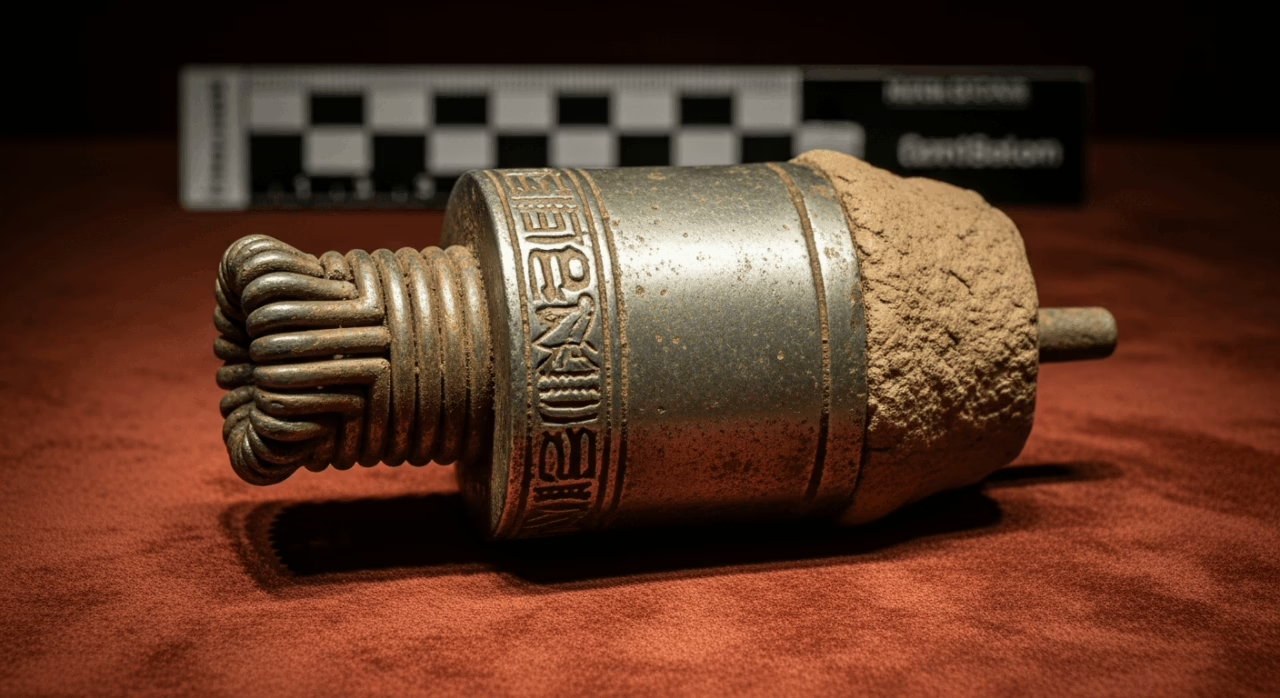
The enigmatic Coso Artifact has transcended its physical existence to become a cultural touchstone that shapes both local Owens Valley folklore and global discussions about ancient technology.
Its mysterious origins have inspired numerous documentaries, science fiction narratives, and artistic interpretations, serving as a canvas upon which different communities project their beliefs about humanity’s technological past.
The artifact’s persistent allure in the popular imagination demonstrates how archaeological curiosities, regardless of scientific consensus, can crystallize into powerful symbols that connect contemporary society with its contemplation of ancestral ingenuity and the nebulous boundaries between myth and history.
Influence on Local and Global Heritage
The enigmatic Coso Artifact has become inexorably woven into the fabric of regional folklore, serving as both a cultural touchstone for Indigenous communities and a subject of fierce debate among locals who claim ancestral connections to its discovery.
Its peculiar nature, neither fully explained by conventional archaeology nor easily dismissed as fraudulent, continues to draw researchers, amateur historians, and curiosity seekers to the eastern California landscape where it allegedly emerged from the earth in 1961.
Beyond its immediate geographical context, the artifact represents a compelling case study in how mysterious objects can transcend their physical properties to become catalysts for scientific inquiry, cultural reflection, and the persistent human desire to connect with our most distant past.
How the artifact has shaped regional history
Since its discovery in 1961, the Coso Artifact has profoundly shaped regional history, transforming from a curious geological specimen into a cultural touchstone that bridges ancient and modern narratives of the Eastern Sierra Nevada.
- Regional influences expanded through indigenous connections, reshaping historical narratives of local tribal heritage.
- Cultural exchanges intensified as the artifact challenged conventional archaeological timelines.
- Trade dynamics in the region gained scholarly attention, highlighting previously overlooked cross-cultural networks.
Its role in sparking modern archaeological interest
Archaeological revolutions often begin with singular discoveries, and the Coso Artifact‘s emergence in 1961 ignited a renaissance of scientific inquiry that continues to reverberate through modern excavation methodologies and theoretical frameworks.
The artifact’s cultural significance transformed archaeological methods, drawing unprecedented public interest while challenging modern interpretations of historical context.
Researchers worldwide now reference this paradigm-shifting find when investigating material culture’s deeper meanings across civilizational boundaries.
The Coso Artifact in Popular Imagination
The Coso Artifact has captured the popular imagination through numerous documentary features and television specials, becoming a staple subject in unexplained mysteries programming since the late 1990s.
Its enigmatic nature—a seemingly mechanical object embedded in ancient geologic material—provides fertile ground for speculation across diverse media platforms, from scientific journals to alternative history websites and conspiracy theory forums.
Despite scientific analysis pointing toward mundane explanations, the artifact’s enduring allure persists as a cultural touchstone for those who find comfort in the possibility that history contains more mysteries than our conventional narratives admit.
Appearances in documentaries and media
Despite remaining enigmatic in academic circles, the Coso Artifact has enjoyed considerable prominence in popular media, particularly within documentaries exploring unexplained phenomena and ancient mysteries.
Notable documentary appearances include:
- “Ancient Aliens” (History Channel, 2010) featuring the artifact as evidence of extraterrestrial technology
- “Mysteries of the Abandoned” examining its archaeological representation
- “Unexplained Files” analyzing its cultural significance amid growing public interest
Its enduring allure as a mysterious relic
Fascination with unexplained artifacts continues to fuel speculation and wonder surrounding the Coso Artifact, bridging decades of curiosity across diverse audiences from skeptical scientists to passionate alien theorists.
Its enduring mystery transcends mere archaeological interest, embodying cultural symbolism that resonates with humanity’s search for meaning.
The artifact’s alleged ancient craftsmanship, whether genuine or misidentified, demands preservation while its mystical significance perpetuates our collective imagination.
Final Thoughts
The Coso Artifact remains an enigmatic intersection of archaeological mystery and cultural interpretation.
As modern analysis continues to examine its composition and context, we must consider: what treasures still lie dormant beneath centuries of sediment, waiting to reshape our understanding of humanity’s technological heritage?
Whether tool or talisman, the artifact’s enduring legacy challenges us to reconcile scientific inquiry with indigenous knowledge systems in our quest for historical truth.
